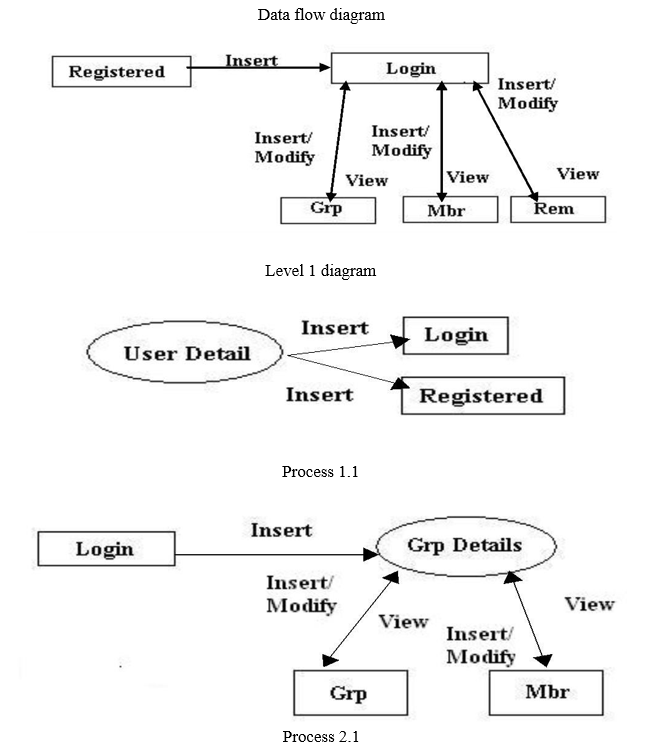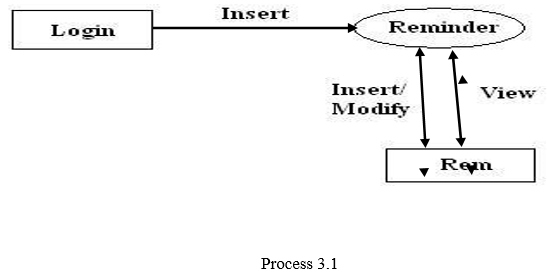Ijraset Journal For Research in Applied Science and Engineering Technology
- Home / Ijraset
- On This Page
- Introduction
- Conclusion
- References
- Copyright
“Face Recognition Based Attendance System”
Authors: Thoke Sayali Satish, Sneha Ramkrushn Kambale, Sameer Praful Khadtale, Prof. Mrs Prajkta Khaire
DOI Link: https://doi.org/10.22214/ijraset.2022.41532
Certificate: View Certificate
Abstract
Introduction
I. INTRODUCTION
- Face recognition is a biometrics method of identifying an individual by comparing live capture or digital image data with the stored record for that person.
- Face recognition based attendance system is marketing of attendance based on this technology
- Face recognition is a part of biometric identification that extracts the facial features of a face, and then stores it as a unique face print to uniquely recognize a person.
- Biometric face recognition technology has gained the attention of many researchers because of its wide application.
- Face recognition technology is better than other biometric based recognition techniques like finger-print, palm-print, iris because of its non-contact process.
II. LITERATURE SURVEY
- Counterpart approach to attendance and feedback system using machine learning techniques.
- Tomateded attendance system using face recognition.
- STUDENT Attendance System using iris DETECT.
A. Existing Systems
In the existing system of the project we had just results that is usage through manually,the existing Systems needs the manual work of faculty members in the prof the marketing Attendance on a sheet of paper.
B. Drawbacks in Existing System
- These Attendance Systems are manual.
- More manpower is required.
- Its difficult to mentioned database or register on manual System.
- There is always Chance of forgery Since these are manually so there is a great Risk of error.
C. Problem Definition
- The goal is to design and implemented software system that detects facial emotion for frontal faces.
- The system should work on embedded platform.
- .Existing system requires manual work and timely process.
D. Scope
The requirement of the user is to:
- Provides facility or the Automated Attendance of Systems.
- Uses live face Recognition to recognize each individual & mark their Attendance automatically.
- Facility of marketing manual Attendance.
- Notification via email if there is a lack of Attendance.
E. Proposed System
- The task of the proposed system is to capture the face of each student and to store it an the database for their attendance.
- The face of the students needs to be captured in such a manner that all the features of the students face need to be detected, even the seating and the posture of the students need to be recognize.
- There is no need for the teacher to manually take attendance in the class because the system records a video _ through further processing steps the face is being recognized & the attendance database is updated.
F. Objectives
The Objective of this project is to develop face Recognition Based Attendance System. Expected achievements in order to fulfill the objectives are:
- To detect the fave segments from the video frame.
- To extract the useful features from the face detect.
- To classify the feature in order to recognize the face detect.
III. PROJECT MANAGEMENT
A. Project Management Techniques
Project management techniques are used for maintenance of the project, meet the project dead lines, and minimum effort required from the company employee.
- Project Planning: The purpose of Project Planning is to identify the scope of the project, estimate the work involved, and create a project schedule. Project planning begins with requirements that define the software to be developed. The project plan is then developed to describe the tasks that will lead to completion.
- Project Monitoring and Control: The purpose of Project Monitoring and Control is to keep the team and management up to date on the project's progress. If the project deviates from the plan, then the project manager can take action to correct the problem. Project monitoring and control involves status meetings to gather status from the team. When changes need to be made, Change control is used to keep the products up to date.
- Software Requirements: Requirements analysis is a term used to describe all the tasks that go into the instigation, scoping and definition of a new or altered computer system. Requirements analysis is an important part of the software engineering process; whereby business analysts or software developer identify the needs or requirements of a client.
B. System Analysis
- Feasibility Study: Feasibility study is the likelihood the system will be useful to organization. After studying the requirements, whether the proposed project is feasible or not, is determined by checking the various feasibilities. The three aspects in the feasibility study portion of preliminary investigation are:
2. Technical Feasibility
Technical feasibility corresponds to determination of whether it is technically feasible to develop the software.
a. Necessary technology exists to do what is suggested and required by the organization.
b. The proposed equipments have the technical capacity to hold the data required to use the new system.
c. The proposed system will provide adequate response to inquiries regardless of the location if users.
d. The hardware needed to develop and implement the system is adequate.
e. The software guarantees accuracy, reliability and ease of access and data security.
3. Economic Feasibility: A system that can be developed and that will be used if installed must still be a good investment for the organization. Financial benefits must equal or exceed the costs.
The financial and economical issues raised are as under:
a. No extra cost is incurred for developing the system. As required software are already used by the department.
b. No extra cost for the modification or addition of software and hardware will require in case of future expansion of the current system.
c. As the project is to be developed by trainees the cost incurred by the company is in the form of resource allocation rather than monetary. The cost on the company is indirect in the form of resources utilization.
d. The company will be at profit if they implement this system because of the cost of implementation is nominal as compared to the profit they will be earning in terms of efficiency.
Considering above factors project is economically feasible.
4. Operational Feasibility
Operational feasibility focuses on whether the system will work when it is developed and installed. Operationally the system is feasible because:
a. There is sufficient support for the project from management and user. The system is well liked and used to the extent that persons will not be able to see reasons for change.
b. The current business methods are not acceptable because the manual system is time consuming. The users though initially repressive worked along with the development team once the initial doubts were cleared.
c. The users have been involved in the planning and development of the project. This reduces the chances of resistance to the system.
d. The proposed system will not cost any harm to the existing system and its users.
e. No special training required for the user as it has a self explanatory interface. Validation of data input is taken care of by the system and not by the user.
Since the most trivial of issues assumes a major problematic state later in the development cycle, every possible aspect of operational feasibility was checked. The proposed project passed all the feasibility tests and hence was declared feasible to organization and its functioning.
Time Schedule Feasibility: Time is the most affecting factor while making a project or a system like this one. The project should be finished within the assigned time. Otherwise the whole project will be delayed and that is disastrous for a project developer and project leader also.
5. Implementation Feasibility: Implementation feasibility is also a very effecting factor while for a new system. The project manager will check whether the developer can make the project in time with the specified requirements and best performance. The project leader will also check that the given tools and technologies to the developer will make the system a success or not.
6. Requirement Analysis: Software requirement analysis is the activity of eliciting, analyzing and recording requirement for software system. It shares much in common with requirement analysis for more general kinds of systems. But has its own specific approaches.
7. Eliciting Requirement: Requirement elicitation is the task of communicating with customers and users to determine what their requirements are.
8. Analysing Requirement: The true analysis part of requirement analysis locates palaces where requirements are unclear, incomplete or ambiguous. Requirements analysts work with customer representatives to resolve these issues, sometimes preparing tradeoff studies to compare alternatives. The purpose of analysis activity is to transform candidate technical requirements into formal requirements by ensuring that they express the needs of the customer.
Analysis is an iterative activity. The process steps will likely to be repeated several times, with consultation between customers, end users and developers during each iteration and communication through the steps.
IV. SYSTEM DESIGN
A. Structured Analysis And Design Technique
- Analysis Methodology: The structured analysis concept employed in the development involved the presentation of system requirements in an easily derived and documented context. The Data Flow Diagram (DFD) represents logical decomposition of system requirements they are valuable in providing a succinct. Readily understood requirements representation, one which is directly communicated to non programmer system users and one which provides an invaluable pre design analysis tool. E R diagrams and data dictionaries have been used as system requirement specification devices.
- Design Methodology: The developments life cycle has effective used powerful software engineering management and development plans. System design methodology input/process/output charts have been used for top-down hierarchy charts. Structured design techniques and pseudo code have been used for system design. Implementations and test phases to ensure adherence to specifications and completeness of the system. Rigorous configuration control has been employed during the software enhancement and the maintenance phase. The current production versions are archived and backed up. Then, the software enhancements are produced and tested independent of the existing operational system. The updated version implemented after thorough parallel testing and approval. Documentation for the system has also been maintained under the configuration management. The changes are tightly controlled to ensure the impact in all areas. The technical approach followed the parallel chain of each of the approaches through the business planning, requirement analysis, general design, database design and detailed design.


V. REQUIREMENT ANALYSIS
A. Requirement Analysis
FrontEnd Contains:
-- Asp.Net 2.0
BackEnd Contains:
-- Microsoft SQL Server 2005
- Front-End:
a. Asp.Net 2.0 and C# 2.0: ASP.NET is a unified Web development model that includes the services necessary for you to build enterprise-class Web applications with a minimum of coding. ASP.NET is part of the .NET Framework, and when coding ASP.NET applications you have access to classes in the .NET Framework. You can code your applications in any language compatible with the common language runtime (CLR), including Microsoft Visual Basic, C#, JScript .NET, and J#.These languages enable you to develop ASP.NET applications that benefit from the common language runtime, type safety, inheritance, and so on.
b. Microsoft’s C#.Net : An ASP.NET page is restricted to code written in a single programming language. Currently, ASP.NET supports Visual Basic, C#, and J#. The default language is Visual Basic, but any other language can be declared as the default language for the page by placing a directive at the top of the page, such as the following: <%@Language="C#"%>
The language can also be declared in a <script language = …> block, as in the example provided in Code Blocks in ASP.NET. If different languages are declared in separate script blocks on the same page, an error will be thrown.
2. Back-End
a. Microsoft SQL Server: Microsoft SQL Server is a set of components that work together to meet the data storage and analysis needs of the largest Web sites and enterprise data processing systems. Microsoft SQL Server 2005 data is stored in databases. The data in a database is organized into the logical components visible to users. A database is also physically implemented as two or more files on disk.
Each instance of SQL Server has four system databases (Login, Registered and Rem) and one or more user databases (Grp and Mbr). Some organizations have only one user database, containing all the data for their organization. Some organizations have different databases for each group in their organization, and sometimes a database used by a single application. For example, an organization could have one database for sales, one for payroll, one for a document management application, and so on. Sometimes an application uses only one database; other applications may access several databases.
VI. REQUIREMENT
A. Hardware Requirement
|
Component
|
Development |
Deployment |
|
Computer System/ Processor |
Pentium 4.1GHz processor |
Pentium 4.1GHz processor |
|
Hard Drive |
80 GB |
80 GB |
|
RAM |
Minimum 512 MB |
Minimum 512 MB |
|
Internet Connection |
No |
Yes |
|
Printer |
No |
Yes |
B. Software Requirements
|
Component
|
Development |
Deployment |
|
Operating System |
Windows XP Professional or later |
Windows XP Professional or later |
|
Database server |
Microsoft SQL Server 2005 |
Microsoft SQL Server 2005 |
|
Front End Tool |
Asp.Net 2.0 |
Internet Explorer |
VII. FUTURE ANALYSIS
- Face Recognition BASED Attendance System can be implemented in larger areas like in a seminar hall where it helps in sensing the presence of many people.
- SOMETIMES the poor lighting condition of the classroom may affect image quality which indirectly degrades system performance, this can be overcome in the latter stage by improving the quality of the video or by using some algorithms
Conclusion
The application works satisfactory. Using it the users can perform the listed function appropriately. The result of the application is pleasing. The website gives accurate and desired results in various ways. Overall the performance of the application is near to perfection. It works according to user’s demand.
References
[1] Https://www.researchgate.net/publication/326261079_Face_detection_ system_for_attendance_of_class’_students Hapani, Smit, et al. \"Automate Attendance System Using Image Processing.\" 2018 Fourth International Conference on Computing Communication Control and Automation (ICCUBEA). IEEE, 2018. [2] Akbar, Md Sajid, et al. \"Face Recognition and RFID Verified Attendance System.\" 2018 International Conference on Computing, Electronics & Communications Engineering (iCCECE). IEEE, 2018. [3] Okokpujie, Kennedy O., et al. \"Design and implementation of a student attendance system using iris biometric recognition.\" 2017 International Conference on Computational Science and Computational Intelligence (CSCI). IEEE, 2017.
Copyright
Copyright © 2022 Thoke Sayali Satish, Sneha Ramkrushn Kambale, Sameer Praful Khadtale, Prof. Mrs Prajkta Khaire. This is an open access article distributed under the Creative Commons Attribution License, which permits unrestricted use, distribution, and reproduction in any medium, provided the original work is properly cited.

Download Paper
Paper Id : IJRASET41532
Publish Date : 2022-04-17
ISSN : 2321-9653
Publisher Name : IJRASET
DOI Link : Click Here
 Submit Paper Online
Submit Paper Online

